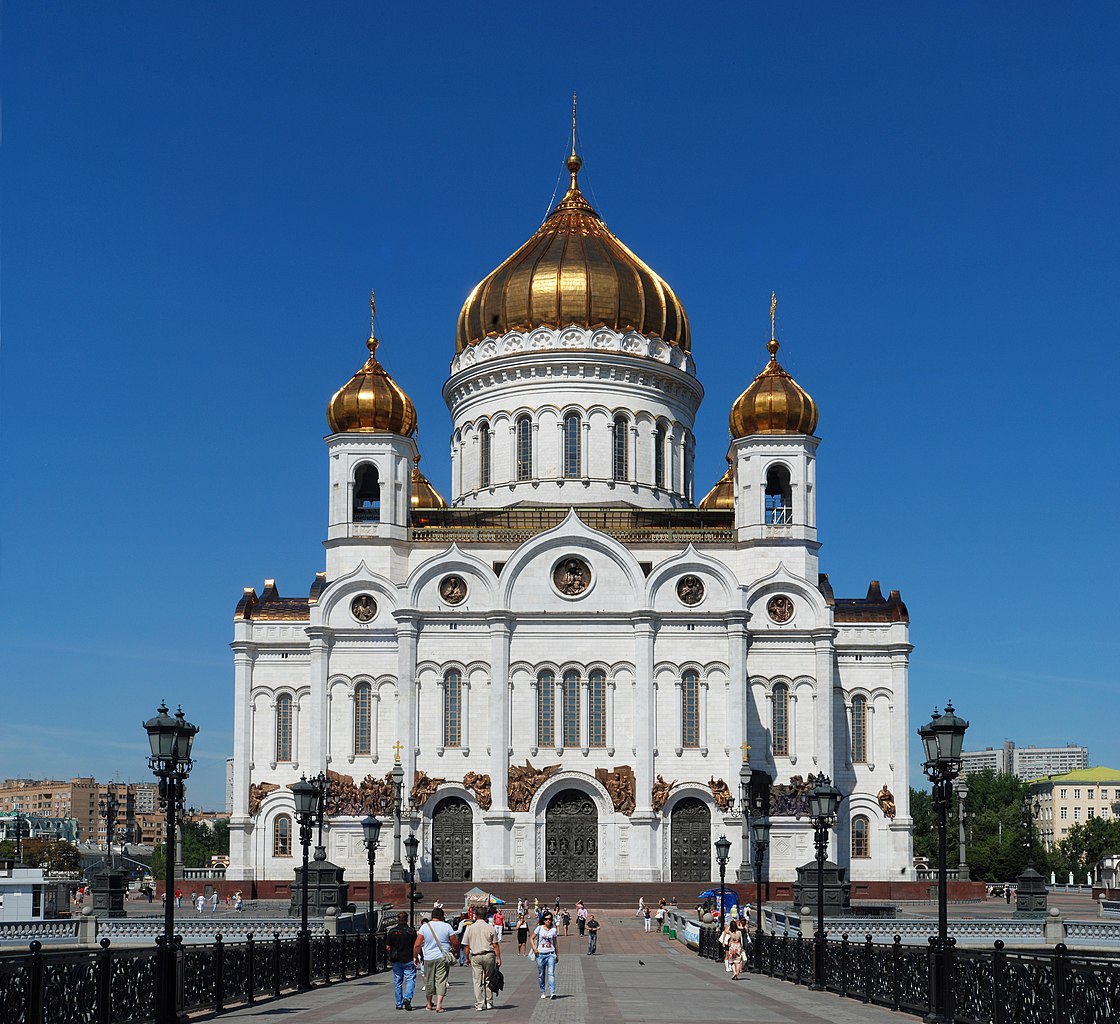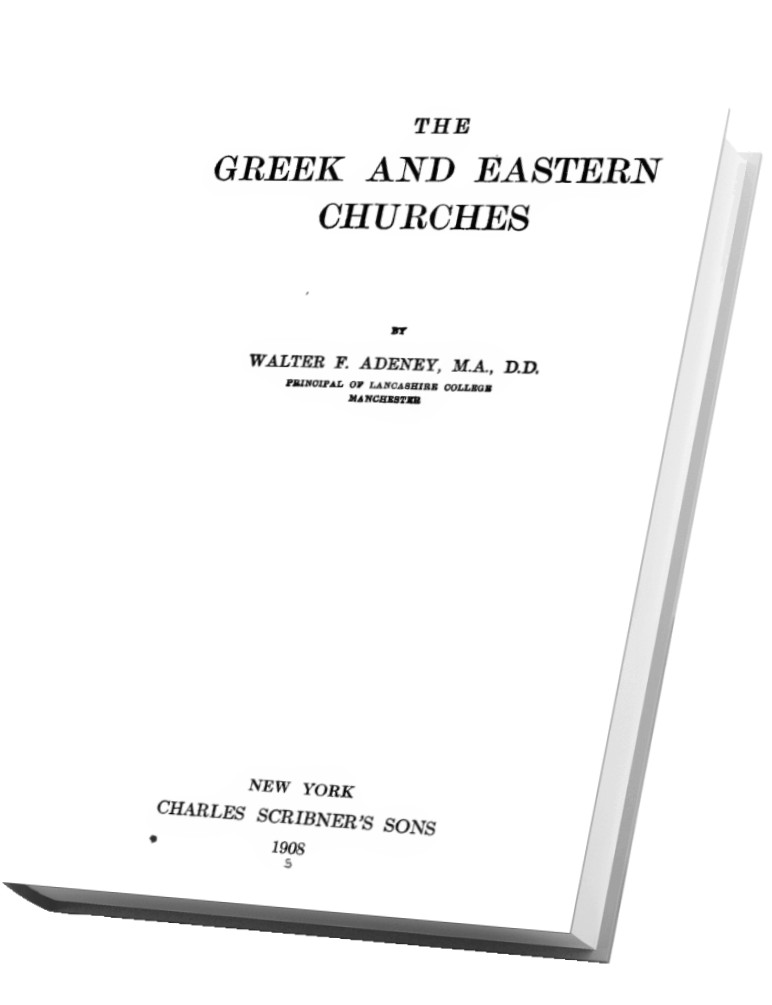Eastern Orthodox Church
According to its followers, the Orthodox Church was founded by Jesus Christ and his apostles. It is also known as the Eastern Orthodox Church or the Greek Orthodox Church. It may also be called the Orthodox Catholic Church and the Orthodox Christian Church.
The population of Eastern Orthodox church is estimated to be between 220 million to 260 million. About 75% of them live in Central and Eastern Europe, and about 40% live in a single country -- Russia. This is a list of the ten biggest Orthodox population by country:

There are many Eastern Orthodox churches with beautify architecture. The pictures below are (1) Cathedral of Christ the Saviour, in Moscow, Russia, and (2) Alexander Nevsky Cathedral, in Sofia, Bulgaria:


More details about the church is provided by Wikipedia:
"The Eastern Orthodox Church, officially the Orthodox Catholic Church, is the second-largest Christian church, with approximately 220 million baptised members. It operates as a communion of autocephalous churches, each governed by its bishops in local synods. Roughly half of Eastern Orthodox Christians live in the territory of the former Soviet Union, most of those living in Russia. The church has no central doctrinal or governmental authority analogous to the bishop of Rome (Roman Catholic Pope), but the ecumenical patriarch of Constantinople is recognised by all as primus inter pares ("first among equals") of the bishops. As one of the oldest surviving religious institutions in the world, the Eastern Orthodox Church has played a prominent role in the history and culture of Eastern and Southeastern Europe, the Caucasus, and the Near East.
Eastern Orthodox theology is based on holy tradition which incorporates the dogmatic decrees of the seven Ecumenical Councils, the Scriptures, and the teaching of the Church Fathers. The church teaches that it is the one, holy, catholic and apostolic church established by Jesus Christ in his Great Commission, and that its bishops are the successors of Christ's apostles. It maintains that it practises the original Christian faith, as passed down by holy tradition. Its patriarchates, reminiscent of the pentarchy, and other autocephalous and autonomous churches reflect a variety of hierarchical organisation. It recognises seven major sacraments, of which the Eucharist is the principal one, celebrated liturgically in synaxis. The church teaches that through consecration invoked by a priest, the sacrificial bread and wine become the body and blood of Christ. The Virgin Mary is venerated in the Eastern Orthodox Church as the God-bearer, honoured in devotions.
The Eastern Orthodox Church shared communion with the Roman Catholic Church in the state church of Rome until the East–West Schism in 1054, disputing particularly the authority of the pope. Before the Council of Ephesus in AD 431 the Church of the East also shared in this communion, as did the Oriental Orthodox Churches before the Council of Chalcedon in AD 451, all separating primarily over differences in Christology.
The majority of Eastern Orthodox Christians live mainly in Southeast and Eastern Europe, Cyprus, Georgia and other communities in the Caucasus region, and communities in Siberia reaching the Russian Far East. There are also smaller communities in the former Byzantine regions of Africa, the Eastern Mediterranean, and in the Middle East, where it is decreasing due to forced migration because of increased religious persecution in recent years. There are also many in other parts of the world, formed through diaspora, conversions, and missionary activity."
If you wish to learn more about the church, you can read the books below:
Information about the author of the book "The Greek and Eastern Churches", available below, is provided here. This may help readers to better evaluate the contents of the book.
"Walter Frederic Adeney (14 March 1849 – 1 September 1920) was an English Congregationalist minister, theologian, and biblical scholar. Born in Ealing in 1849, he was educated at New College and University College London. He served as a minister in Acton from 1872 to 1889 and became a lecturer in biblical and systematic theology at New College, London, in 1887. He was promoted to a professorship in New Testament exegesis and church history at New College in 1889, before moving to become Principal of Lancashire Independent College in Manchester in 1903. In addition to the numerous works he wrote on the Bible, for both academic and popular audiences, Adeney was general editor of the Century Bible Commentary, and in 1908 he published an extensive history of Eastern Christianity, The Greek and Eastern Churches. He retired in 1913, and died in Lewes on 1 September 1920." (from Wikipedia; accessed 2021)
The Greek and Eastern Churches (file size: about 15 MB)

Information about the author of the book "The Orthodox Eastern Church", available below, is provided here. This may help readers to better evaluate the contents of the book.
"Adrian Henry Timothy Knottesford Fortescue (14 January 1874 – 11 February 1923) was an English Roman Catholic priest and polymath. An influential liturgist, artist, calligrapher, composer, polyglot, amateur photographer, Byzantine scholar, and adventurer, he was also the founder of the Church of St Hugh of Lincoln in Letchworth.
In 1891 Fortescue entered the Scots' College in Rome, where, due to his exceptional musical talent, he was soon appointed organist. He was awarded the degree of Bachelor of Divinity in 1892 and his PhD in 1894, when he entered the theological faculty at Innsbruck University. He was ordained to the priesthood on 27 March 1898 by Simon Aichner, Bishop of Brixen.
Between 1899 and 1905 Fortescue passed doctoral examinations in moral theology, dogma, ecclesiastical history, canon law, Arabic, and biblical science—passing the examination in Semitic languages with great distinction, a rare achievement. On 10 June 1905 he was awarded the degree of Doctor of Divinity, making him the very rare recipient of a triple doctorate. The level of his scholarship was so exceptional that he was awarded a prize presented to him personally by the Emperor Franz Joseph I of Austria." (from Wikipedia; accessed 2021)
The Orthodox Eastern Church (file size: about 11 MB)
